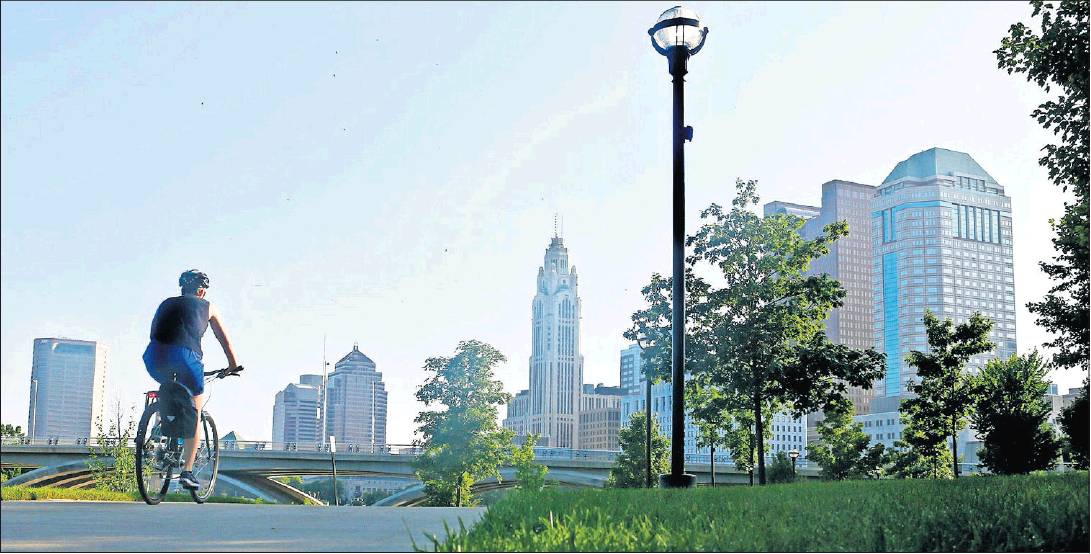On two wheels
Ohio State study: More trails, covered parking would get more bicyclists on road
By Mark FerenchikThe Columbus Dispatch
An Ohio State University study found that people who live Downtown or in densely populated neighborhoods, such as those near the Ohio State campus, are more likely to use their bicycles to commute than those living in other types of neighborhoods.
But more people would be willing to bicycle to and from work if there were more bicycle trails, bike-sharing chances and covered parking, researchers found.
The study, published recently in the Journal of Transport and Land Use, could give city and regional planners ideas about designing neighborhoods, streets and bike trails, said Yujin Park, lead author of the study and a doctoral candidate at the Ohio State University Knowlton School of Architecture.
“Bicycling contributes to urban vitality and, as a planner, I was interested in what the most influencing factors could be to make people be willing to choose a bicycle to commute,” Park said in a statement released by Ohio State.
The study was based on a survey of 1,200 people who commuted to Ohio State. About 12.6% of them classified themselves as bicyclists. About 5.4% reported that a bicycle is their main mode of transportation to campus.
The researchers found that people who live in high-density areas were more than twice as likely to commute by bicycle as those in medium-density areas, and more than three times as likely to commute by bike than suburban residents.
Letty Schamp is the deputy city engineer in Hilliard and chairs the Central Ohio Greenways board. “We’re obviously very interested in Hilliard and Central Ohio Greenways with more protected (trails),” Schamp said.
She said that in the suburbs there are few people who use their bikes to commute, but creating more protected trails would encourage people to bicycle to the grocery store, for example.
A lot of trails run along stream corridors or through parks, Schamp said. “That’s wonderful for recreation, but they’re not meeting the needs of commuters,” she said.
Melinda Vonstein, the Central Ohio Greenways coordinator for the Mid-Ohio Regional Planning Commission, said another 500 miles of trails are envisioned for the seven-county area: Delaware, Fairfield, Franklin, Licking, Madison, Pickaway and Union counties. Those trails would be added to the 230 miles already there.
To do that would cost $250 million, Vonstein said.
“We know the community values the trail network,” Vonstein said. And adding miles would mean that more people will be willing to commute on their bicycles using the trails, she said.
But she said advocates are putting together additional data to show to potential funders the positive health, environmental, social and economic development benefits the trails would bring.
John Beacom already uses his bicycle to commute. The Ohio State professor of physics and astronomy said he bicycles from his Grandview Heights home to campus each day, even in winter. The bicycle, he said, has studded tires. “I can ride safely on a sheet of ice,” Beacom said.
Beacom said safety is the No. 1 concern when people ask him about commuting on a bike. He said he feels lucky that his route, through low-traffic residential neighborhoods and down a bicycle lane through a field, is safe.
“A lot of streets in town I would not want to be riding on every day,” he said. “It’s not fun.”
Erin Synk, a Merion Village resident and member of the Columbus South Side Area Commission and the Yay Bikes! board, said she has commuted to her Downtown job by bicycle for about 2
½ years. She said the 2-mile commute takes from 12 to 20 minutes.
“It’s quick, it’s easy, it’s practical,” she said. mferench@ dispatch.com @MarkFerenchik
